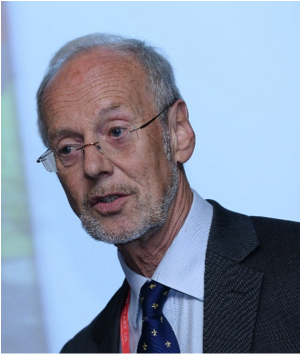This year’s 32nd HEART UK Annual Medical and Scientific Conference reflects the current challenges and innovations within the lipid community. Whilst bringing variety to the programme with a number of hot topics, each area was skilfully explored by the speakers and audience bringing greater insight and direction to our management of cardiovascular disease. Jaqui Walker reports from the conference, held at the University of Warwick from July 4th–6th 2018.

Lipoprotein (a)
The role of lipoprotein (a) [Lp(a)] was explored by Professor Klaus Parhofer (Ludwig Maximilians University, Munich, Germany). This is an independent risk factor in cardiovascular disease (CVD), with a causal link to atherosclerosis, myocardial infarction (MI), aortic valve stenosis and heart failure.
Of the different therapies that can be used to reduce elevated Lp(a), only apheresis shows a reduction in CVD events. Currently, the most important management strategy is to optimise all other CVD risk factors, particularly low-density-lipoprotein cholesterol (LDL-C). In patients with progressive CVD, despite optimal control of all other risk factors, apheresis should be considered. Family screening for elevated Lp(a) levels is important because its concentration is very much genetically driven.
Professor Kurt Widhalm (Academic Institute for Clinical Nutrition, Vienna, Austria) explained that up to 90% of the variation in Lp(a) levels is due to genetics. It is thought that raised LDL-C and Lp(a) levels increase the risk of CVD in children but urgent research is needed to guide management. He presented data from children with i) familial hypercholesterolaemia (FH), ii) with FH and elevated Lp(a), and iii) with elevated Lp(a) only, and whether there was any association with measurements of the intima media thickness (IMT) of the carotid artery. This showed difference in regard to IMT within the three groups, he said, and he concluded that the atherogenic process possibly starts later in life.
Moving to the role of Lp(a) reduction using apheresis in patients with refractory angina, Dr Tina Khan (Imperial College/Royal Brompton and Harefield NHS Foundation Trust, London) gave an overview of her research into Lp(a) as a therapeutic target. She discussed the impact of lipoprotein apheresis on clinical outcomes such as angina symptoms, quality of life, exercise capacity, quantitative myocardial blood flow and carotid atheroma burden. Assessed in a randomised, controlled, cross-over trial, apheresis was found to lead to significant improvements in all these outcomes in patients with refractory angina as well as on oxidised LDL-C, associated antibodies and thrombogenic parameters. Interestingly 60% of the patients with refractory angina screened for the study were found to have elevated levels of Lp(a).
Drug therapies to manage raised Lp(a) are under development including phase III randomised trials of PCSK9 inhibitors for patients with selectively raised Lp(a) and phase II randomised studies for antisense oligonucleotides. Statins and lifestyle changes have minimal impact on Lp(a) levels and so it is a very frustrating lipoprotein to treat.
The vision of a world in which elevated Lp(a) is routinely diagnosed, treated and family screened was brought to the conference by Mrs Sandra Revill Tremulis, (President, and Founder of the Lipoprotein (a) Foundation, San Carlos, USA). She shared her own personal story and family history to explain the impact genetically elevated Lp(a) can have on a family and highlighted the importance of detection, finding management strategies and a treatment for this condition. Conventional risk calculators do not identify CVD risk from elevated Lp(a) because it is not routinely tested for, yet elevated Lp(a) affects one in five people globally making it the most prevalent genetic risk factor for premature CVD.
The Lipoprotein (a) Foundation aims to increase awareness of elevated Lp(a) as an inherited cholesterol/lipid risk for CVD, educate and empower people, and save lives. A registry of patients is being developed to help with research. It’s also hoped new guidelines will suggest screening for elevated Lp(a) for anyone with a family history of CVD.

Interleukin-1
The problem and management of inflammation in coronary arteries was discussed by Professor Sheila Francis (University of Sheffield), who took the audience back through 30 years of research to the discovery of interleukin-1 (IL-1) and the important role this protein plays in the development of atherosclerotic plaques and vascular injury. Inhibiting lL-1 in patients with coronary artery disease is useful, especially where there is residual inflammation. With the recent reporting of the CANTOS study last year, carried out across 39 centres and including 11,000 patients, it can now be demonstrated that new treatments that block IL-1 can reduce adverse clinical events in patients with stable coronary artery disease.
Bariatric surgery

Obesity is a growing problem in the UK, with 66% of the population being overweight, 25% being obese and the health cost of obesity eating up about 10% of the NHS budget. Professor Jon Barry (Morriston Hospital and Swansea University) led the audience through bariatric surgical approaches for obesity. He discussed the difficulties associated with healthcare professionals often perceiving this as a last resort, whilst the evidence around bariatric surgery suggests it is efficacious, durable and cost-effective.
Obesity is a complex, multifactorial problem, which leads to multiple comorbidities, lower life expectancy, reduced employment and social discrimination. Bariatric surgery has evolved from bypass and open banding procedures with high morbidity and mortality rates, to laparoscopic surgery with its favourable safety profile. Professor Barry described obesity as the (metabolic) cancer of the 21st century and urged clinicians to refer patients for surgery at a younger age, with a lower level of obesity and people who are newly diagnosed with type 2 diabetes where the disease can be reversed. Patients who undergo bariatric surgery live seven to 15 years longer with a significantly better quality of life making it a compelling solution to the rising problem of obesity.

Professor Jeffery Stephens (Morriston Hospital and Swansea University) looked at the metabolic improvement seen in patients with impaired glucose tolerance following bariatric, or as it could be more accurately called, metabolic surgery. Bariatric surgery is now established as a tool for managing obesity-related metabolic dysfunction and advanced techniques can now deliver improvements in both glucose and insulin homeostasis, lipid abnormalities, and markers of chronic low-grade systemic inflammation and oxidative stress.
Longer term (greater than five year) data around remission of type 2 diabetes and preservation of long-term glucose regulation is still required but the evidence, so far, suggests a superior effect with bariatric surgery in comparison to conventional management. The mechanism for diabetes resolution in the early phase is likely to be restoration of the glucagon-like peptide (GLP-1) response, calorie restriction and improved insulin sensitivity. Later weight loss is likely to drive improvements in insulin sensitivity and there may be a role for glucose-dependent insulinotrophic peptide.

Women and CVD
The life-time risk of CVD in women and the need to address gender-specific aspects of CVD was explained by Dr Jane Flint Bridgewater (Dudley Group NHS Foundation Trust). CVD is an important cause of premature death in women, who under the age of 55 years, are more likely to present with atypical MI symptoms when compared with men or older women, and have the highest risk of death from MI of any group.
Progress to increase awareness and improve management has been made since the development of the British Cardiovascular Society joint working group recommendations (updated in 2014) for women’s cardiovascular health. There is now improved awareness among the population and health professionals; useful tools, such as JBS 3 lifetime risk assessment calculator; and timelier referral for women to rapid assessment clinics for CVD symptoms. There is also greater focus on the importance of gender when planning clinical trials and healthcare services. Journals such as The Lancet now insist on a gender analysis in work accepted for publication.
Having awareness that women’s experience and symptoms of MI is often different to men and having gender-specific data from clinical trials to guide risk assessment and inform risk assessment tools, as well as suitable treatments to reduce CVD risk in women, is greatly important for their health.

The gender gap
There is a CVD gender gap of six to seven years in favour of women. With over 50% of premature deaths in men potentially avoidable, it is important that action is taken. Professor Michael Kirby (University of Hertfordshire) explained possible reasons for the gender gap, such as differences in risk behaviour (often generated by social pressure), biological factors and lack of engagement with health care services. Interestingly, men with erectile dysfunction (ED) have a 44% increased risk of experiencing a cardiovascular event. ED can act as a barometer to cardiovascular health; suboptimal erections occur when a small percentage of the lumen of the penile artery is lost but symptoms of angina do not occur until around 75% of the lumen of the coronary artery is lost. In this way “men with ED are cardiovascular patients until proven otherwise”, he says.
Professor Kirby believes ED should be asked about and included within CVD risk calculators, as it is now in QRISK 3. Low testosterone is another warning signal for premature death but levels can be increased by diet and exercise. If 10% of body weight is lost, testosterone will increase. In 2012 a paper in The Lancet showed the global life expectancy between men and women to be persisting with no sign of narrowing. Professor Kirby explained that most people are aware of the benefits of exercise and a healthy diet but it is up to health care professionals to move them from the contemplation to the action phase. “A simple message, delivered with sincerity, needs to be repeated every time we encounter our patients.”

Nuclear receptors
In this year’s Myant lecture, Professor Bart Staels (Head of INSERM, University of Lille, France) told the story of three decades of work into the development of nuclear receptors in the control of metabolic and cardiovascular disease. Nuclear receptors are important in regulating how the body adapts to changes in the environment, such as more fat in the diet. The nuclear receptor, peroxisome proliferator-activated receptor (PPAR) alpha, plays a crucial role in the regulation of lipid and glucose metabolism and new drug therapies are in development that may help in the treatment of diabetes, dyslipidaemia, CVD and non-alcoholic fatty liver disease (NAFLD).
Metabolic flexibility to the changes throughout the 24-hour period of daily life is important and patients with cardiometabolic diseases may lose this. Many physiological functions e.g. temperature, cholesterol synthesis, blood pressure, and heart rate, are controlled in a circadian manner by our body clock. Light influences the clock in the brain but food and exercise can affect the clock in peripheral tissue, such as the liver. Interestingly, nuclear receptors interact with this clock mechanism. Rev-erb alpha is a transcriptional repressor that has circadian and metabolic activities. Pharmacological activation of rev-erb alpha inhibits inflammation via the NLRP3 inflammasome pathway. The highest incidence of MI is early in the morning and research has indicated that rev-erb alpha antagonism can be used to help prevent morning cardiac surgery induced ischaemia/reperfusion injuries that can lead to a post-surgery type 5 MI. Professor Staels called for a greater consideration and more research into how the time of day affects CVD.
He also reviewed ongoing trials in dyslipidaemia and nuclear receptors, which is hoped will elucidate their future therapeutic role. He said the residual inflammatory and cholesterol cardiovascular risk, despite statin use, is an important area to tackle. The CVD patient is changing and many have multi-organ disease. Future therapeutics will require integrated management and an understanding of how inflammation links much of this disease.
Jaqui Walker
General Practice Nurse and Medical Writer
References
1. Al-Lamee R, Thompson D, Dehbi H-M et al., ORBITA investigators. Percutaneous coronary intervention in stable angina (ORBITA): a double-blind, randomised controlled trial. Lancet 2018;391:31–40. https://doi.org/10.1016/S0140-6376(17)32714-9
2. Brown DL, Redberg RF. Last nail in the coffin for PCI in stable angina? Lancet 2018;391:3–4. https://doi.org/10.1016/S0140-6736(17)32757-5
3. Al-Lamee R, Howard JP, Shun-Shin MJ et al. Fractional flow reserve and instantaneous wave-free ratio as predictors of the placebo-controlled response to percutaneous coronary intervention in stable single-vessel coronary artery disease: physiology-stratified analysis of ORBITA. Circulation 2018; published online May 22nd 2018. https://doi.org/CIRCULATIONAHA.118.033801
4. Xaplanteris P, Fournier S, Pijls NHJ et al., FAME 2 Investigators. Five-year outcomes with PCI guided by fractional flow reserve. N Engl J Med 2018;379: 250-9. https://doi.org/NEJMoa1803538
5. Ali ZA, Brinton TJ, Hill JM, Maehara A et al. Optical coherence tomography characterization of coronary lithoplasty for treatment of calcified lesions: first description. JACC Cardiovasc Imaging 2017;10:897–906. https://doi.org/10.1016/j.jcmg.2017.06.021
6. Serruys P. SURTAVI: one-year outcomes of patients with severe aortic stenosis and an STS-PROM of less than three percent. Presented at EuroPCR 2018, Paris, France, 22nd-25th May 2018.
7. Makkar R. SAPIEN 3 outcomes for bicuspid vs tricuspid aortic valve stenosis: propensity matched results. Presented at EuroPCR 2018, Paris, France, 22nd-25th May 2018.
8. Testa L. Cerebral protection during TAVR reduces the incidence of major cerebrovascular events: results from an up-to-date systematic review and meta-analysis. J Am Heart Assoc 2018; May 4;7(10).pii: e008463. https://doi.org/10.1161/JAHA.117.008463
9. Sondergaard L. NOTION: longevity of transcatheter and surgical bioprosthetic aortic valves in patients with severe aortic stenosis and lower surgical risk. Presented at EuroPCR 2018, Paris, France, 22nd-25th May 2018.
10. Redwood S. MAVERIC: first presentation of the 1-year follow-up of the mitral valve repair clinical trial. Presented at EuroPCR 2018, Paris, France, 22nd-25th May 2018.
11. Mahoud F. Procedural details from the SPYRAL HTN OFF-MED trial of renal denervation for uncontrolled hypertension. Presented at EuroPCR 2018, Paris, France, 22nd-25th May 2018
12. Mauri L. RADIANCE-HTN SOLO: primary outcomes of a randomised sham-controlled, off-medication study in hypertension utilising an endovascular ultrasound renal denervation system. Presented at EuroPCR 2018, Paris, France, 22nd-25th May 2018.

